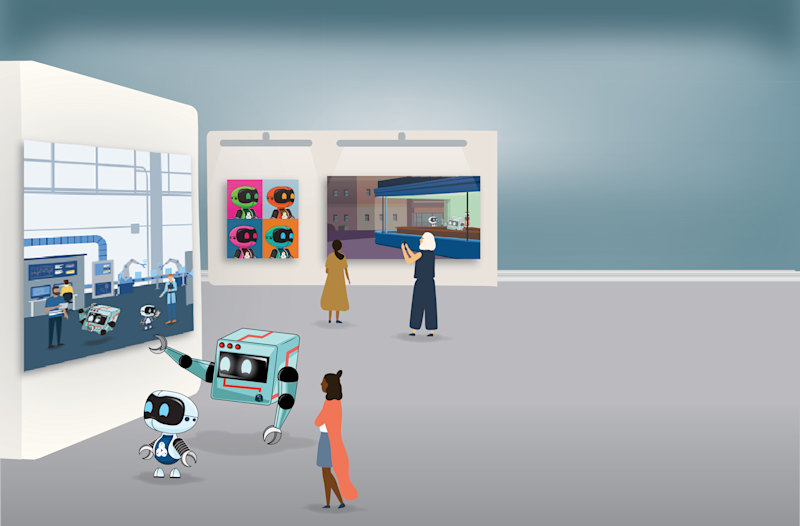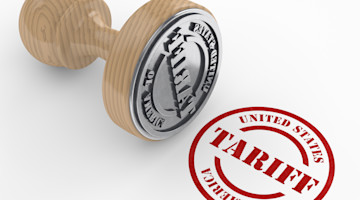Manufacturing companies the world over are embracing robots in a big way. While U.S. companies have long been deploying the equipment, there are still great opportunities that can be realized, especially as U.S. manufacturers work to gain orders from overseas – and the competition is ramping up their robotics capacity.
There were 517,385 new industrial robots installed globally in 2021, according to the International Federation of Robotics (IFR).* Marina Bill, IFR president, says, “Within six years, annual robot installations more than doubled. According to our latest statistics, installations grew strongly in 2021 in all major customer industries, although supply chain disruptions as well as different local or regional headwinds hampered production.”
Yes, global manufacturers are embracing an increasing number of robots.
If there is any question about the usefulness and importance of robots and automation, realize that the 517,385 number is a 31% year-on-year increase, and while you may shrug at that, writing it off as 2020 – when COVID-19 was causing, to use Ms. Bill’s language, “supply chain disruptions” and “local or regional headwinds” on a global scale – know that the previous record was set in 2018, 423,321 units, so the trend is non-trivial and indicative of the fact that the use of the multifunctional machines is on the rise.
Where Are They?
Let’s set the stage, recognizing that your competitors are not necessarily down the street or across town, but likely somewhere else on Earth.
The country with the largest GDP in the world is the United States. The second largest is China, which is nearing the end of the “Made in China 2025” initiative that started in 2015 in order to gain a technical advantage.
So know that of the 517,385 robots installed in the world, 268,195 – more than half – were installed in China.
A country where robots have long been part of the fabric of manufacturing, Japan, is in second place, at 47,182 robots.
The United States had the third-greatest number of installations: 34,987 units.
Electronics Application
However, to be fair, it is worth knowing that the leading application area for robots in China is electronics. According to market research firm IBISWorld, “China is the world’s manufacturing center for electronic products, such as TVs, computers, handsets and other electronic devices. Subsequently, China’s output of certain electronic components is the highest in the world, especially for commonly used and medium- and low-end electronic components.”
If we look at where robots went in Chinese manufacturing, it isn’t surprising: the electrical/electronics category. There were some 88,000 units installed.
But here’s something to put on your radar screen: The automotive segment was No. 2 on the installation list: approximately 62,000.
And keep this one in mind: While the growth of robot installations in electrical/electronics in China was up 38%, it was up 97% in the auto sector.
Clearly, durable goods is an area of focus.
Living in the USA
At this point, you may be starting to think simply, “Yes, they use a lot of robots in China, but I live in the United States. What’s the landscape here for robots?”
The top category of industrial robot use in the United States is the one where it really began: automotive. In 2021 there were 9,782 robots installed in the U.S. auto industry, which happens to be a decrease of 7% compared with 2020 – and 2020 was down some 19% since 2019.
To be sure, there are reasons why this is the case. For example, by their very nature, robots are flexible. This means that when one vehicle goes out of production or fewer of them need to be built, the robots can be refurbished and deployed elsewhere.
In fact, that is one of the beauties of robotic automation: It isn’t fixed. It can be reused. Potentially only the end-of-arm tooling is the hard equipment that needs to be changed.
However, there are bright spots in the IFR numbers for the three categories that follow auto in the United States in ranking:
While robots have long been a feature of manufacturing operations in the United States, and while it might seem that they are, in many cases, a “given,” that is far from being the case.
Think about the photos of robots being deployed in manufacturing that appear in mainstream publications: Almost always it’s of an automotive spot-welding line – plenty of arms and sparks galore.
But “Motor vehicles, bodies and trailers, and parts” is only one of multiple segments in an analysis of U.S. manufacturing: Deployment in other industries (e.g., the aforementioned metal and machinery, plastic and chemical products, and food categories) are important opportunities.
And while robots may be thought of in the context of that spot-welding line, equipment advances over the years (ease of use; simple programming; advanced sensors), make robots accessible to manufacturing facilities of all sizes.
According to the World Economic Forum’s “Future of Work Survey 2020” report, 78% of companies surveyed in the United States said that they are “likely” or “very likely” to deploy robots – by 2025.
Clearly, there is valuable traction occurring in those other companies of various sizes.
Jobs, Jobs, Jobs
To point out that there are plenty of open positions at manufacturing facilities of all sizes is to state the obvious. What’s more, managers recognize that it is important to make sure that the people on staff remain there. So, it is important to leverage existing resources. Which is essentially the point of robotic automation. Want to gain a productivity improvement? Look at robots.
SelectUSA, a U.S. Department of Commerce program, conducted a study on the impact of robots on productivity, “Robots and the Economy: The Role of Automation in Driving Productivity Growth.” It found:
“For all industries, there was a positive relationship between industrial robot density and productivity. An increase in industrial robot density of one percent correlated with an increase in productivity of 0.8 percent, all else equal.”
This isn’t a case of robots subtracting people but of robots being additive on the factory floors.
There is another finding that should be of importance to those who are part of the roughly 20% who have yet to embrace automation technology:
“For the industries that were slower robot adopters, a one percent increase in industrial robot density simultaneously occurred with a 5.1 percent increase in productivity, all else equal.”
As companies are looking for any productive edge, there is clearly a route to improvement through robotics – especially for those companies that have been lagging in robot deployment.
Muda-Busting
Going back to the IFR figures: Globally, the top three installation areas for robots (and they’ve been leading for the past three years) are:
Handling 230,000 Robots
Welding 96,000 Robots
Assembling 62,000 Robot**
If we consider Taiichi Ohno’s seven wastes of manufacturing, called “muda” – overproduction, waiting, conveyance, processing, inventory, motion, correction – the handling tasks that some companies are automating addresses, in part, two of them, conveyance and motion. So that provides a productivity improvement for those companies.
Who doesn’t want to eliminate waste?
Reshoring, but ...
While reshoring, bringing back production from overseas to the United States, is certainly a real thing, according to the 2021 Kearney Reshoring Index, which is bullish on reshoring, “79 percent of the manufacturing executives who have operations in China have either already moved part of their operations to the United States or plan to do so in the next three years. An additional 15% are evaluating similar moves.”
But then the other shoe drops: 22% of CEOs, Kearney found, aren’t considering reshoring.
The Kearney interpretation:
“This difference between manufacturing executives and CEOs might indicate that those closer to the daily challenges in the supply chain evaluate different manufacturing options as they try to find short-term relief, while CEOs are looking at it from a longer-term overall company strategy perspective and are perhaps not yet convinced that reshoring is the answer.”
Let’s roll back to the start.
The biggest global competitor to the United States, China, is installing a significant number of robots. Robots enhance productivity. Improved productivity can lead to reduced costs and improved profits. So maybe some of that 22% are looking at these numbers and figuring where they might get the best deal.
The point is simply this: A cost-effective and long-proven means to increase productivity is the deployment of robots. There is an entire suite of robotics, from padded-armed cobots that can safely work along with people to massive six-axis robots that can move 5,000 pounds more than 12 feet. The ease of use is ever-increasing. The applicability is greater than ever.
Having tools like these leverages one’s ability to be globally competitive. Take that productivity and add the logistics advantages of on-shored operations, then U.S. manufacturing can gain a considerable edge.
If you have any questions about this information, please contact Gary at vasilash@gmail.com.









